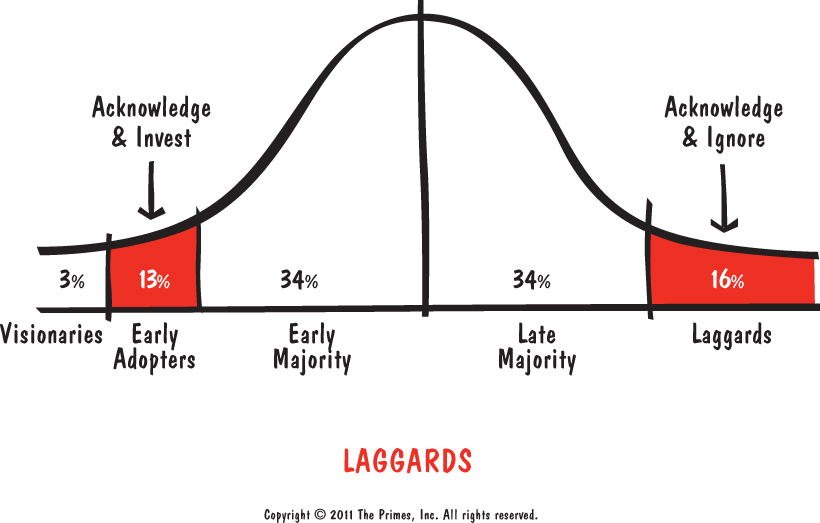
Do you know how to starve “possibility killers”?
The curve in the LAGGARDS illustration categorizes and quantifies how people react to change. Three percent of your people are “visionaries” who will jump at anything. However, they have limited credibility among other group members. Early Adopters are willing to take a risk if basic questions are answered satisfactorily. The Early Majority relies on Early Adopters for direction, while the Late Majority moves because it doesn't want to be left behind. LAGGARDS, however, never come along; they destroy possibility by constantly asking questions, ignoring answers, and declaring why things won't work.
Leaders must identify the traits of individuals in a group; they have to ignore the LAGGARDS and invest their time and energy in the Early Adopters.
Visionaries stand out right away. These people are the first to sign up when a group is considering a change or introducing a new system. In essence, they are risk junkies—the first to embrace new thoughts, technology, and processes. But their hit rate is low, and their instant enthusiasm can give leadership a false sense of support. Visionaries are easily distracted by the next bright and shiny object. Even though everyone loves to invite visionaries to parties, they would never ask one to cover their backs. They handle risk recklessly and everyone knows it.
When presented with ...
Get The Primes: How any Group can Solve any Problem now with the O’Reilly learning platform.
O’Reilly members experience books, live events, courses curated by job role, and more from O’Reilly and nearly 200 top publishers.

